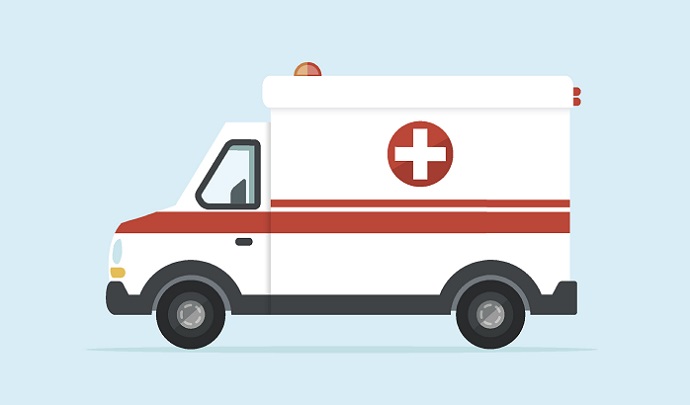HHS Releases Alternative Payment Model for Ambulance Providers
A new alternative payment model will pay ambulance providers for treating Medicare beneficiaries on scene or sending them to lower-acuity care settings.

Source: Getty Images
- HHS and the CMS Innovation Center (CMMI) recently announced a new alternative payment model for ambulance providers that aims to improve Medicare emergency transport services.
The five-year Emergency Triage, Treat, and Transport (ET3) model will test a new payment method for ambulance providers that will steer Medicare fee-for-service beneficiaries who call 911 to the most appropriate care setting.
Under the alternative payment model, ambulance providers will be able to partner with a qualified healthcare practitioner to treat beneficiaries on scene, meaning on-the-scene or via telehealth. Ambulance providers will also be able to send patients to an alternative destination, such as a primary care office or an urgent care clinic.
Through the model, HHS and CMMI also intend to create medical triage lines for low-acuity 911 calls in regions where participating ambulance suppliers and providers operate.
“This model will create a new set of incentives for emergency transport and care, ensuring patients get convenient, appropriate treatment in whatever setting makes sense for them,” HHS Secretary Alex Azar stated in an official press release. “Today’s announcement shows that we can radically rethink the incentives around care delivery even in one of the trickiest parts of our system. A value-based healthcare system will help deliver each patient the right care, at the right price, in the right setting, from the right provider.”
READ MORE: How Emergency Providers Can Adopt Alternative Payment Models
HHS and CMMI intend for the new alternative payment model to encourage more appropriate utilization of services.
Currently, Medicare only pays for unscheduled, emergency ground ambulance services when beneficiaries are sent to a hospital emergency department (ED). The reimbursement structure incentivizes ambulance providers to transport beneficiaries to the hospital even if a lower-acuity setting may be more appropriate for the beneficiary’s needs.
Medicare could save up to $560 million per year by transporting beneficiaries to physician offices rather than the hospital ED, the Departments of Health and Human Services and Transportation recently reported in a white paper.
In light of the finding, HHS saw an opportunity to innovate emergency medical services in Medicare.
The ET3 model plans to do just that by paying ambulance providers for treating beneficiaries on the scene with the assistance of a qualified healthcare practitioner and for unscheduled, emergency transport of beneficiaries to alternative destinations other than destinations covered under current regulations, such as 24-hour care clinics.
READ MORE: 3 Strategies to Innovatively Advance Emergency Care Delivery
Ambulance providers will also be able to earn up to a five percent payment adjustment in later years of the five-year demonstration. Providers will qualify for the bonus by delivering high-quality care based on their performance on key quality measure.
Overall, HHS and CMMI anticipate the alternative payment model to not only promote more appropriate utilization of services, but also increase emergency medical service system efficiency and provide patient-centered care.
“The ET3 model is yet another way CMS is transforming America’s healthcare system to deliver better value and results for patients through innovation,” CMS Administrator Seema Verma stated in the announcement. “This model will help make how we pay for care more patient-centric by supporting care in more appropriate settings while saving emergency medical services providers precious time and resources to respond to more serious cases.”
Industry expert Rita Numerof, President of Numerof & Associates, believes the alternative payment model is a step in the right direction for value-based care.
"In emergency situations, patients have had little, if any, say about where they receive treatment. Most importantly, payment models and liability concerns have conspired to ensure that patients get delivered to the most expensive setting—the emergency room, regardless of whether or not their condition is a true medical emergency. This trend has led to overuse of the ER, unneeded expense, inconvenience, and often over-treatment," she recently told RevCycleIntelligence.com.
READ MORE: Industry Orgs Fight Anthem’s Emergency Department Payment Policy
"Under HHS’s newly introduced payment model, patients can have access to the right care at the right time, in a setting that is most capable of meeting their needs at the time. Hospitals were never meant to be destinations of choice, and patients deserve to have accessible, appropriate care options," she continued. "Key to the success of this new model will be the identification of ‘appropriate’ care options and the ability to accurately diagnose needs, matching those needs to the right setting and provider(s). It is an important step in the journey to real value and market-based healthcare solutions."
The ET3 model is slated to launch in 2020. The alternative payment model will be open to Medicare-enrolled ambulance service suppliers and hospital-owned ambulance providers.
Local governments, their designees, and other entities that operate or have authority over one or more 911 dispatches in areas where participating ambulance providers are will also have the opportunity to participate, HHS and CMMI noted.
CMMI plans to release a request for application period in the summer of 2019.
